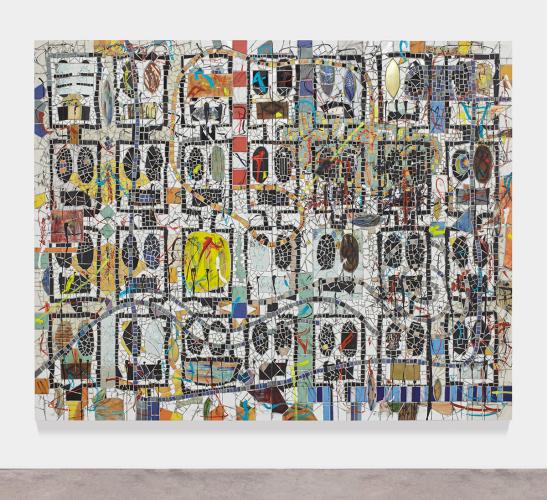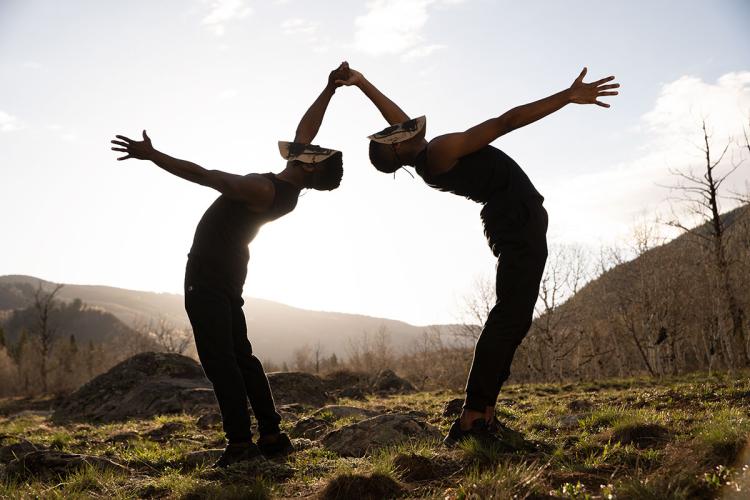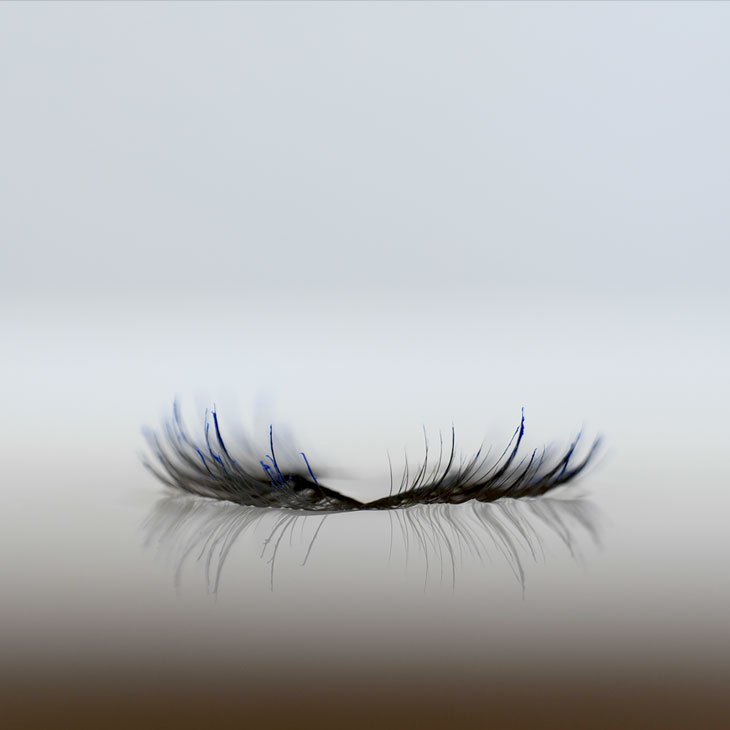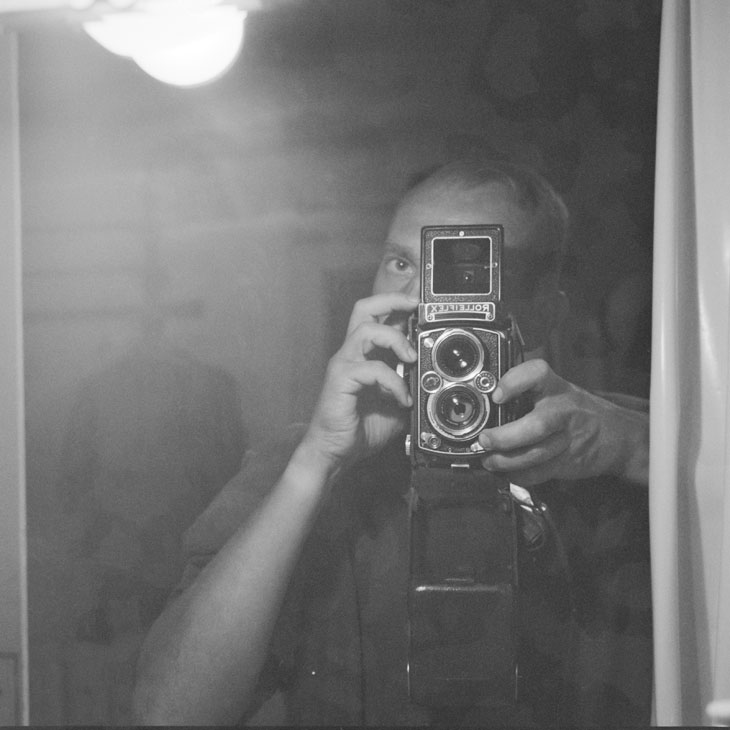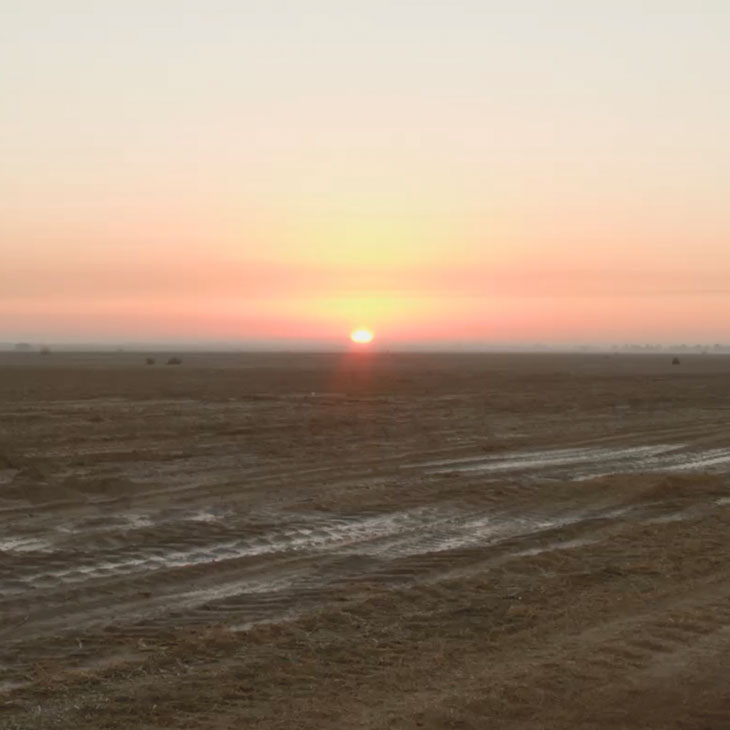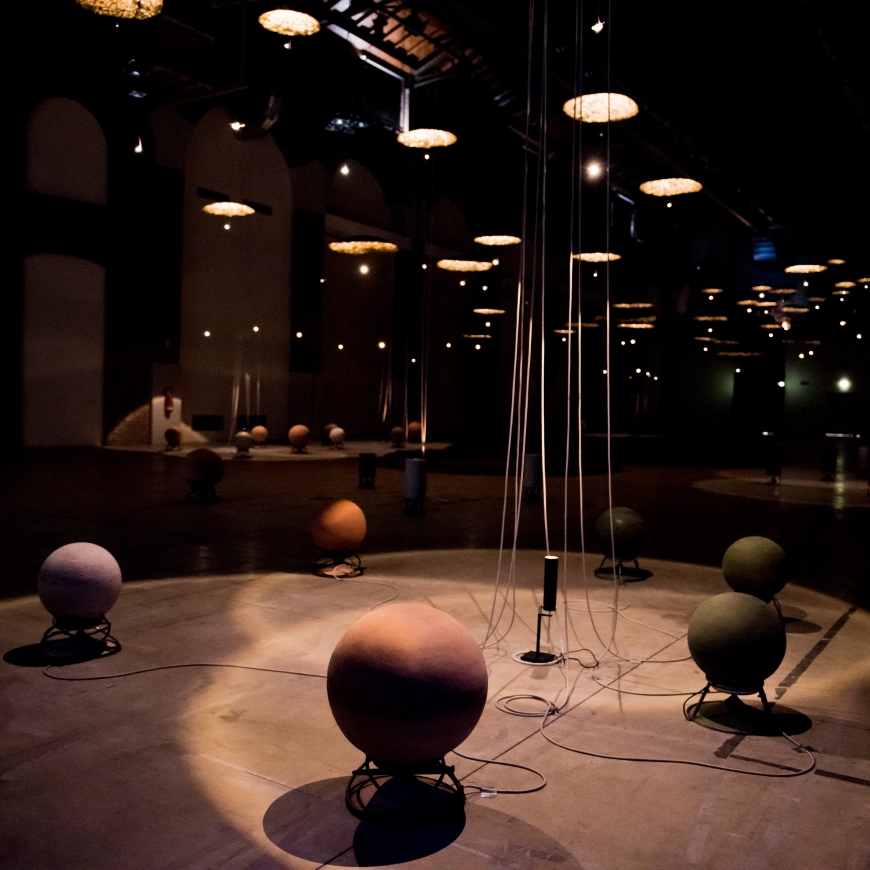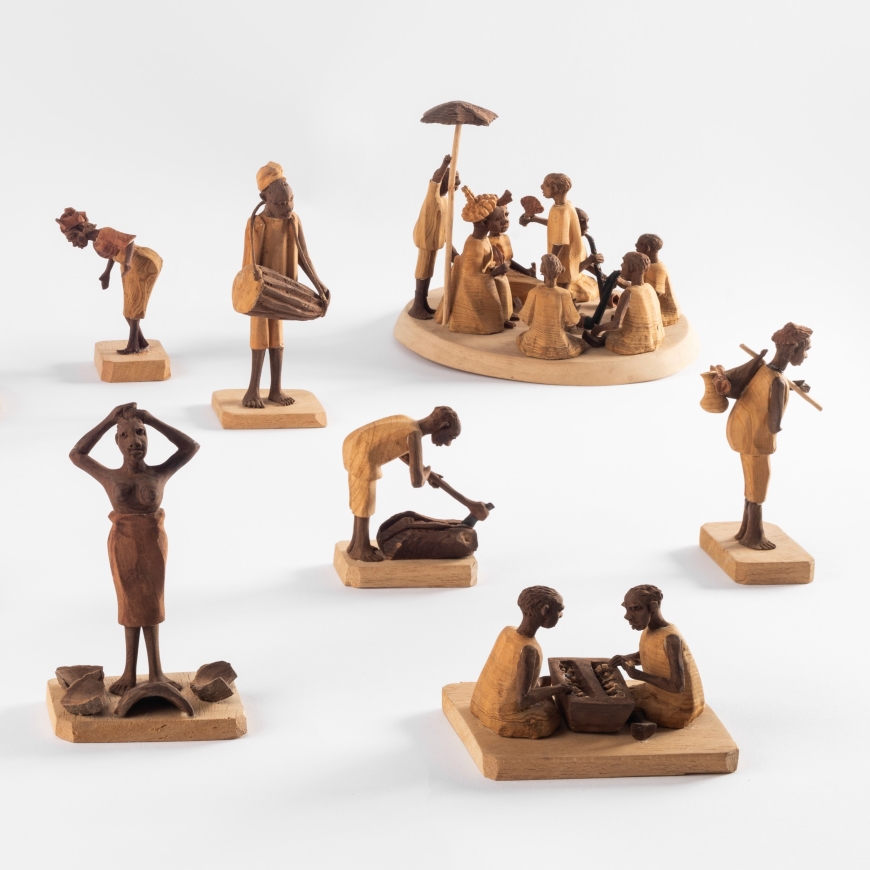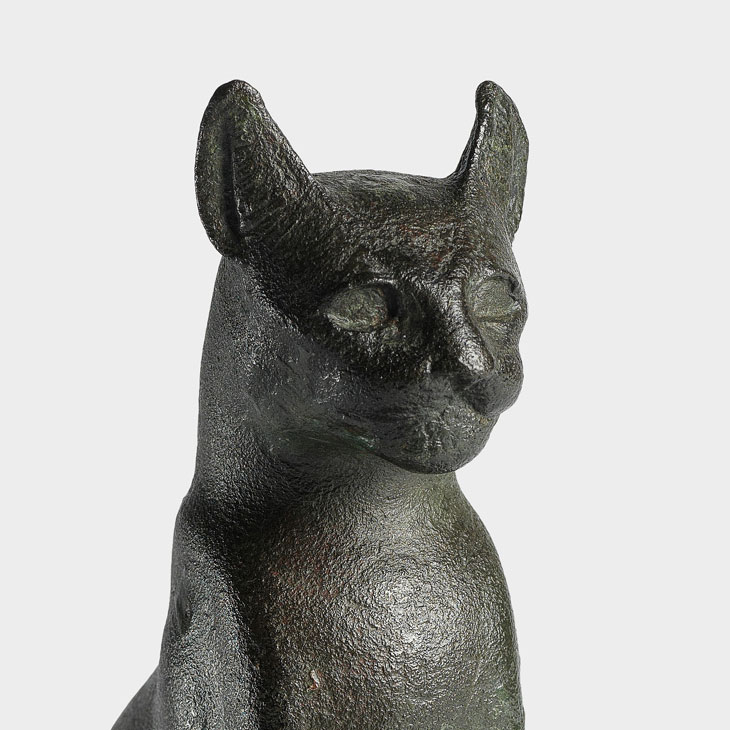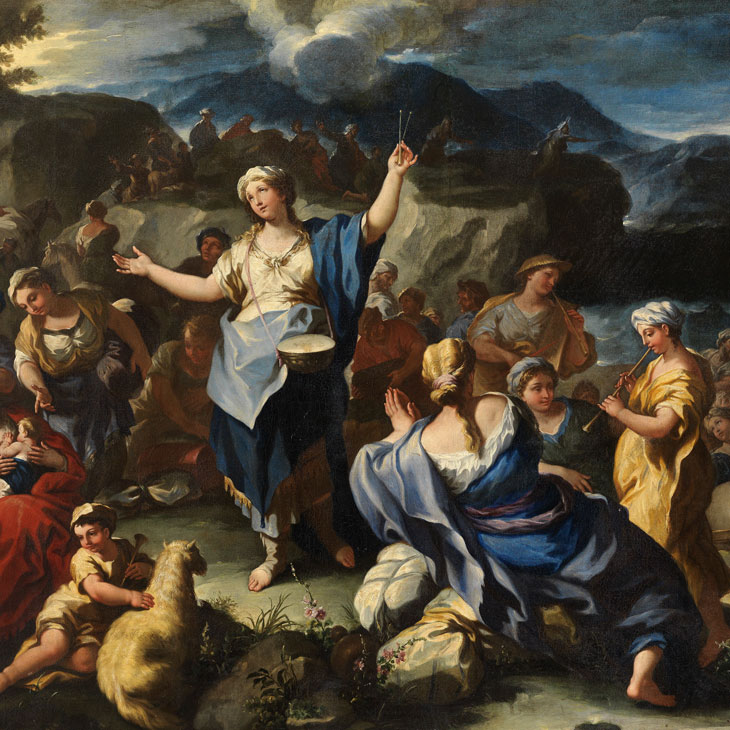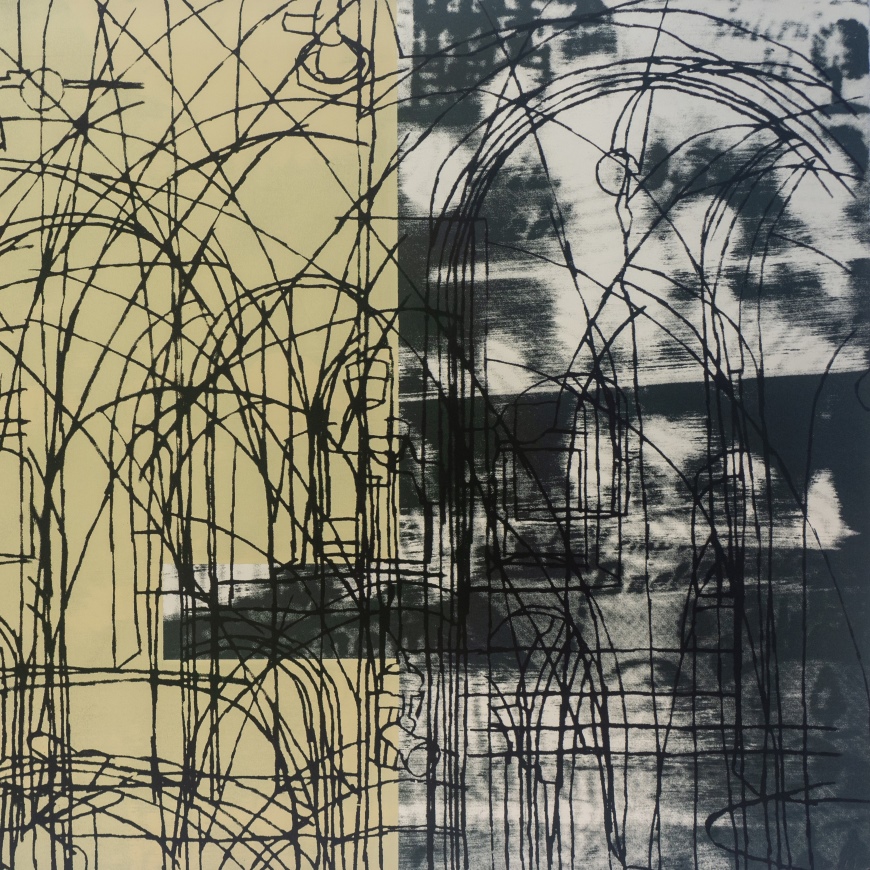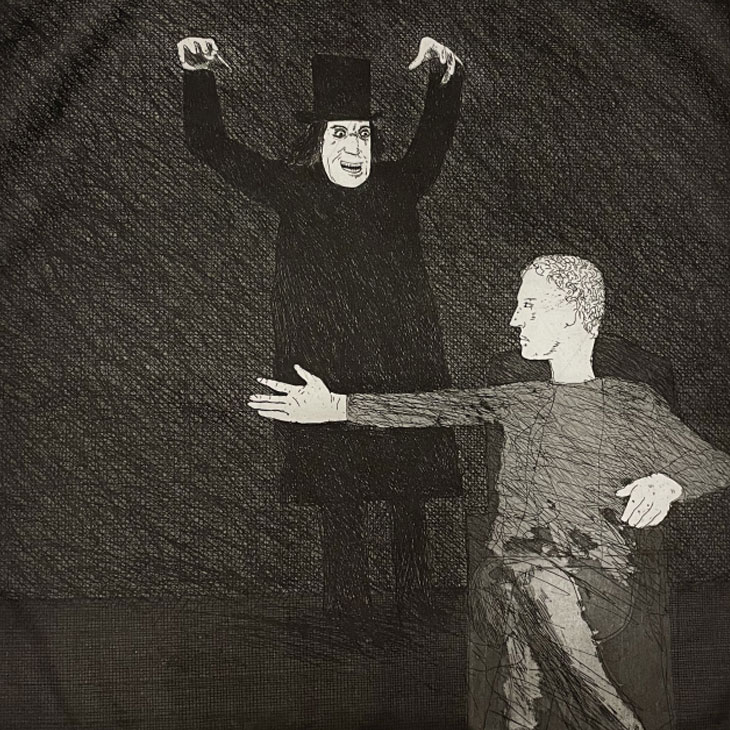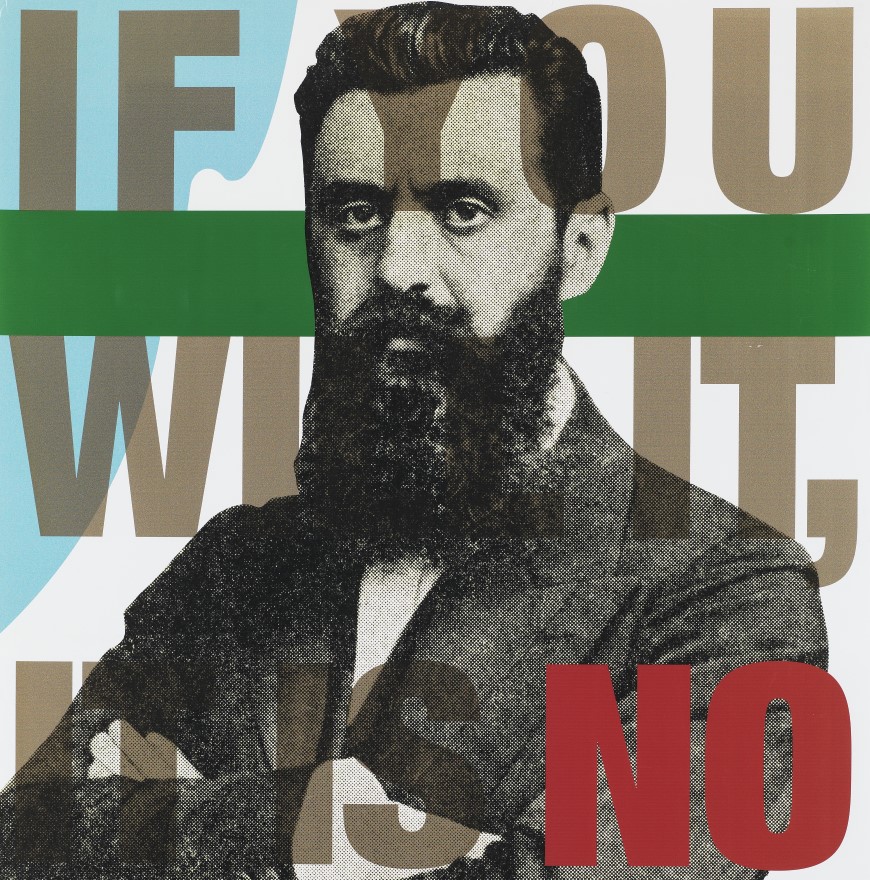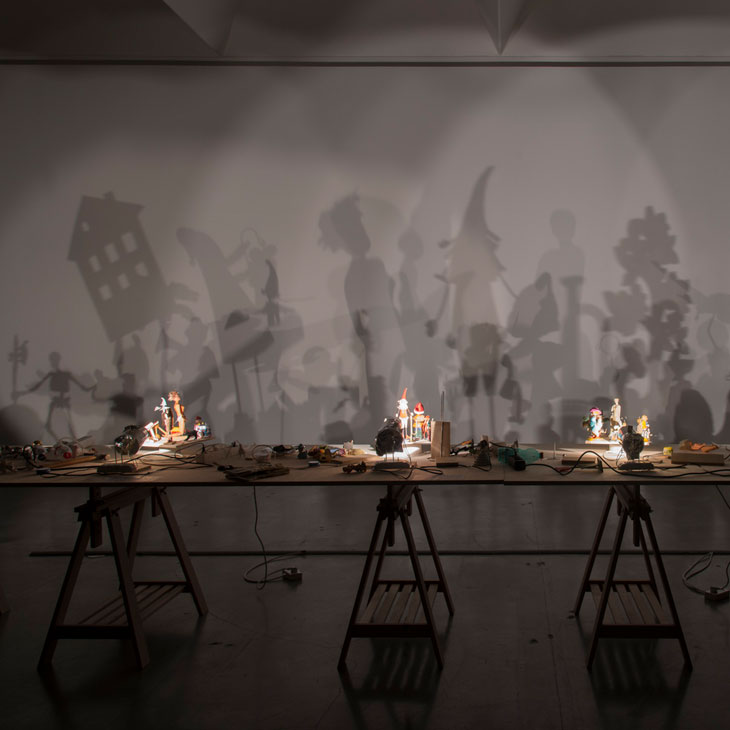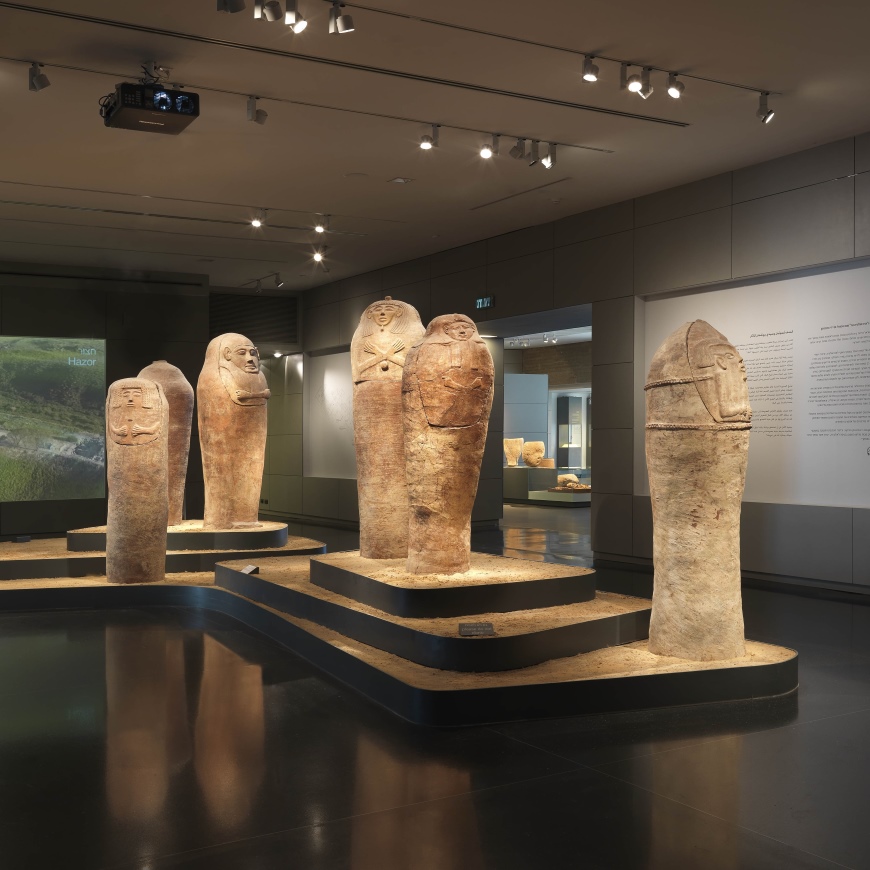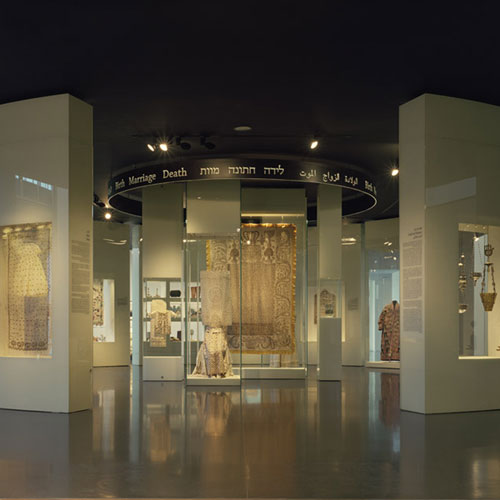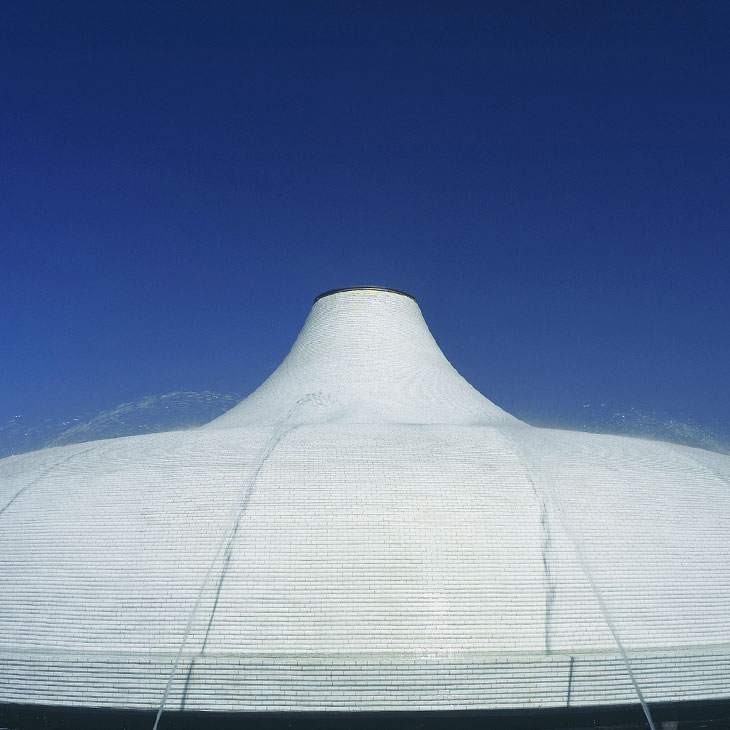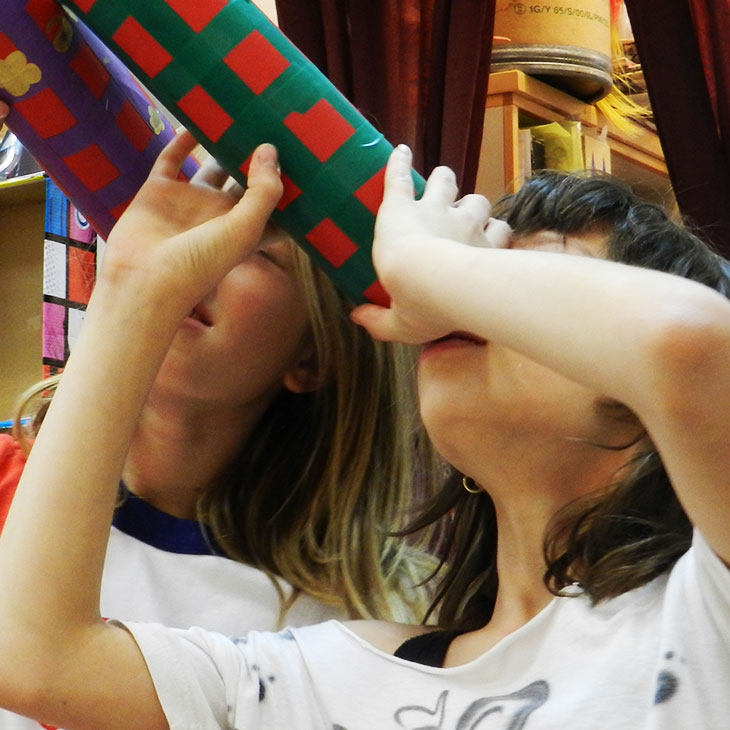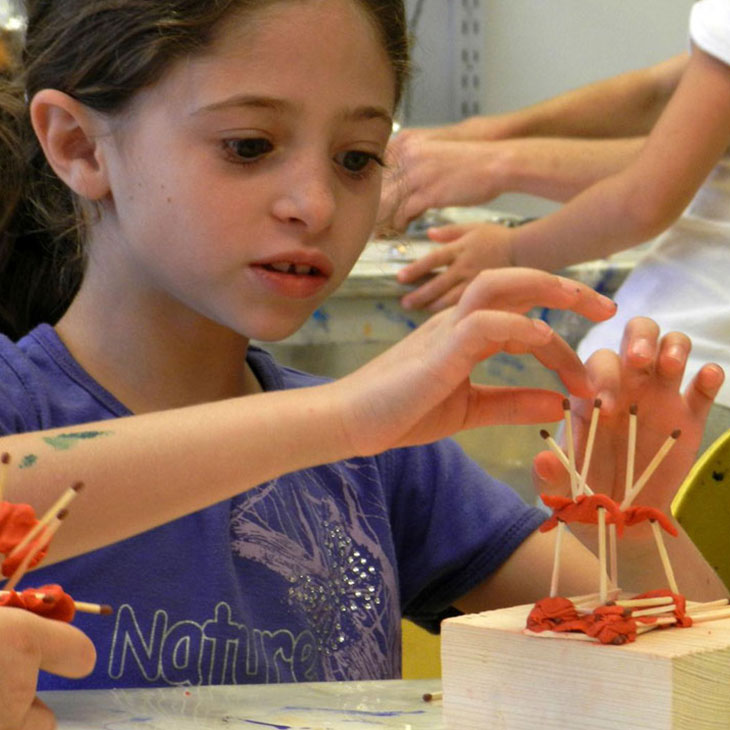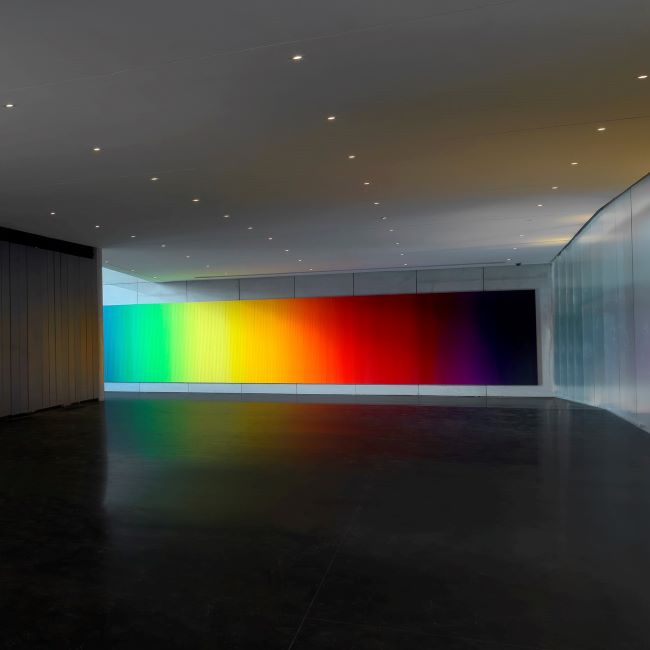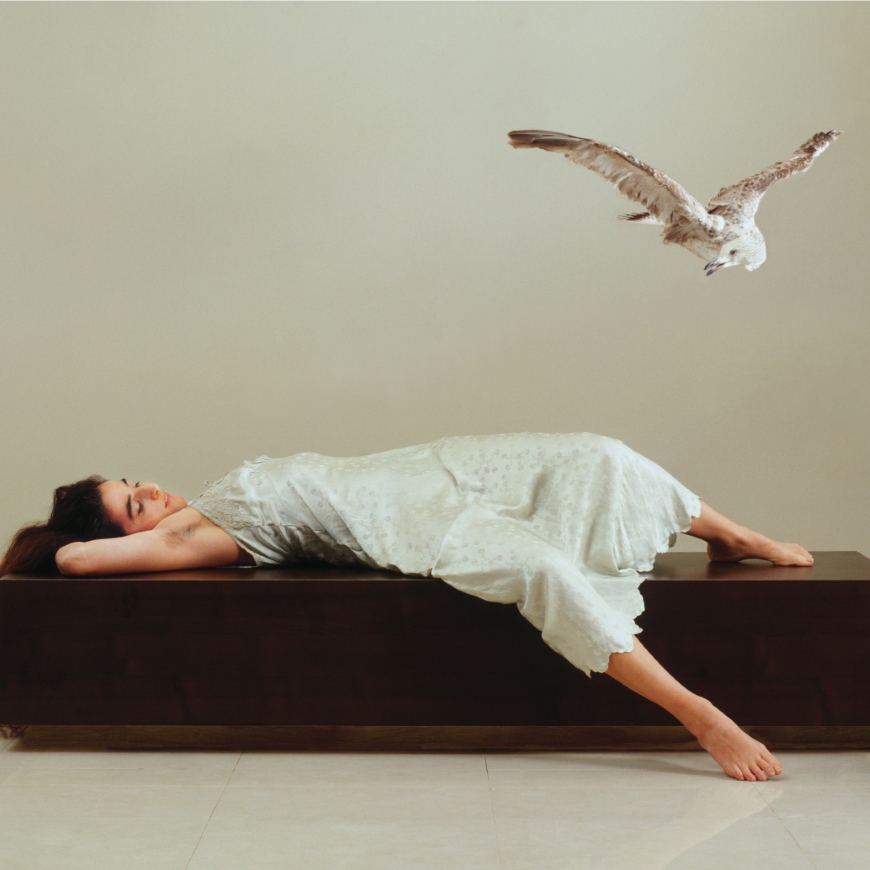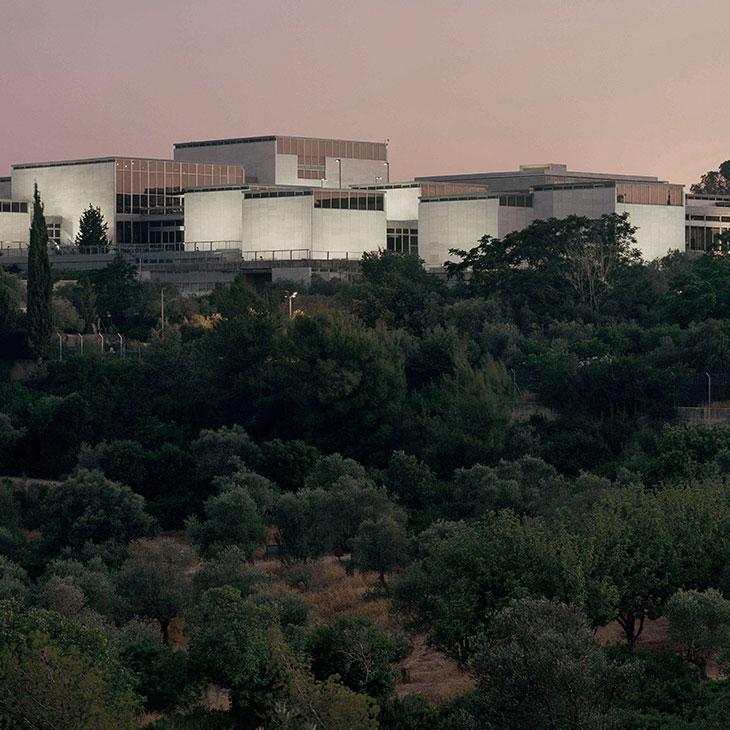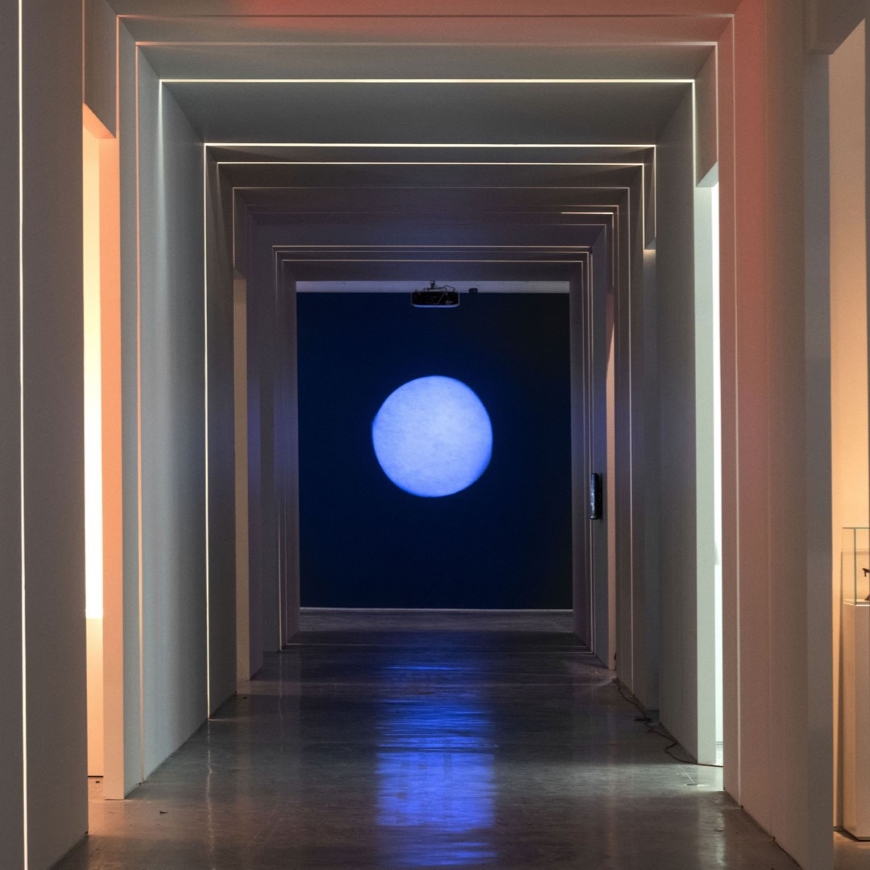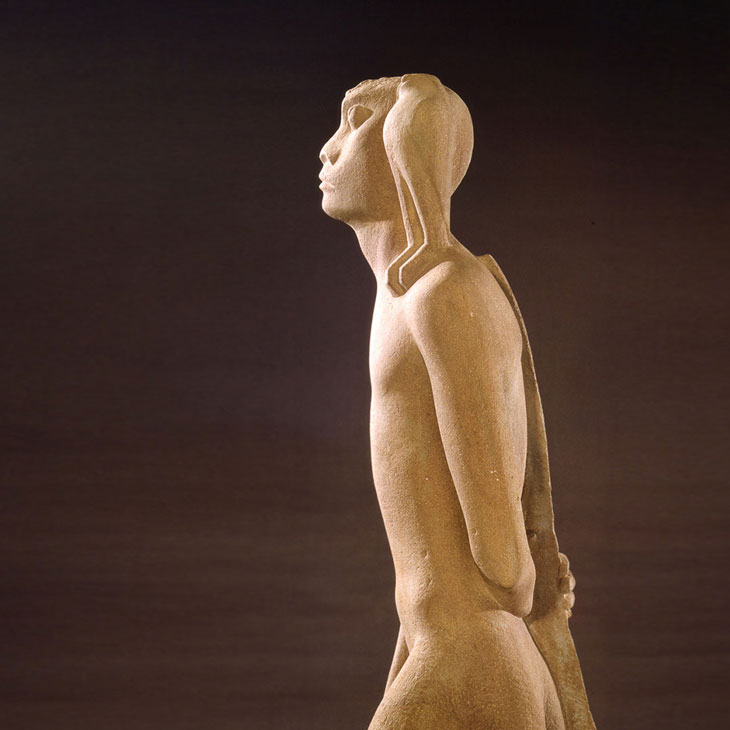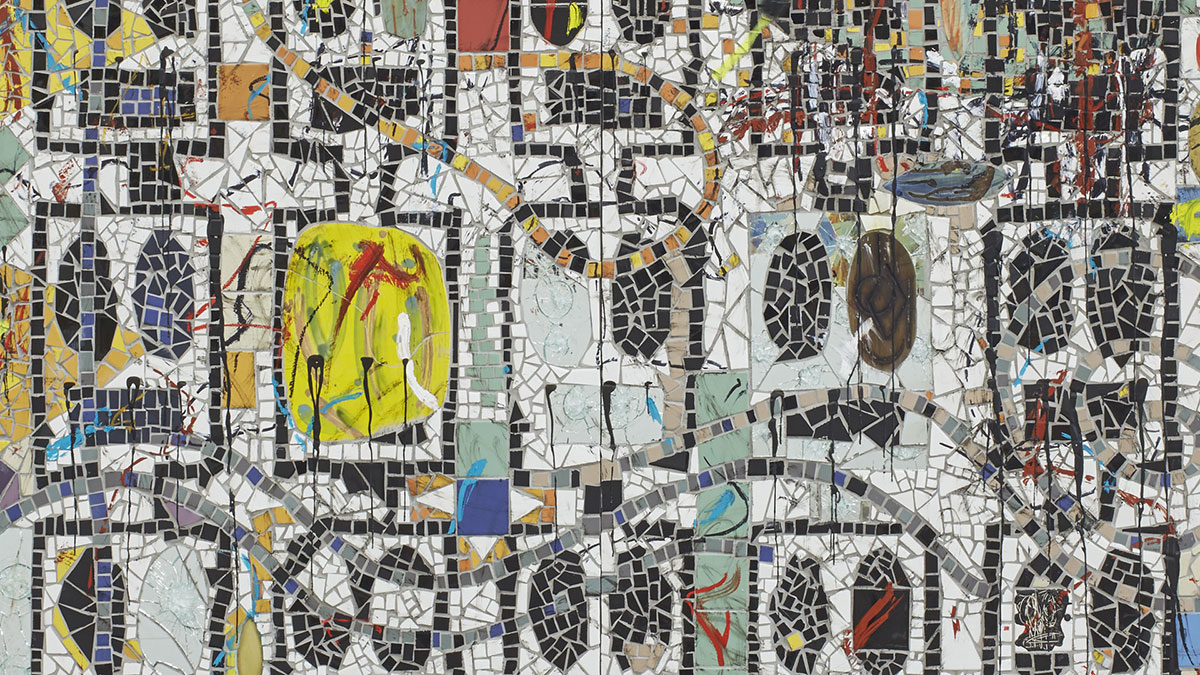
Rashid Johnson: Broken Crowd
-
August 9 2023 - February 28 2024
Curator: Orly Rabi
Designer: Lia Tomashof
-
Rena (Fisch) and Robert Lewin Gallery
Rashid Johnson, an influential voice in contemporary art, addresses the issue of African-American individual and collective identity in the twenty-first century. Three of his works, presented in the exhibition, employ expressive body language to convey the physical and psychological experience of Black people in a racist, discriminatory environment.
In the painting Cosmic Slop “Grease,” Johnson poured liquefied black soap mixed with wax on a board, making marks in the material before it solidified. The soap, originating in West Africa and used to treat sensitive skin, acts in Johnson's work as a kind of protective layer that symbolizes healing power. The vitality of the material and its spontaneous effusion echo the artist’s body movements while creating the painting, as in a performative dance.
The extroverted energy of the abstract action painting is also apparent in the facial expressions of the figures in the mosaic Untitled Broken Crowd. Rows of human beings, undifferentiated by race, sex, or nationality, emerge from the fragments of colored ceramic tiles, mirror, and wood. Their wide-open eyes and gaping mouths express anxiety, shock, or frustration with the human condition in the present day. They are witnesses to police brutality, violent political rhetoric, and the refugee crisis, or are protesters against these social ills.
Their figures, depicted in an abstract idiom, recall African masks, like those worn by the men in the video work The Hikers. Here, two Black dancers approach each other on a mountainside. As they meet, they pull off the anxious masks to reveal their faces, their intense convoluted movements becoming gestures of reciprocity and intimacy. The tension inherent in their motion illustrates the tremor accompanying the walk of the Black man as he becomes aware of the penetrating white gaze upon him.
The layers of paint on the wooden surface, the facial expressions and masks, and the skin protecting the body – all these depict the external covering and that which throbs beneath, the depths below the surface and the fear that’s been internalized.
A Conversation with Rashid Johnson
- Apr 21Apr 24Apr 28May 05May 08May 12May 15May 19May 22May 26May 29
- Apr 21Apr 28May 05May 12May 19May 26
- Apr 21Apr 24Apr 28May 05May 08May 12May 15May 19May 22May 26May 29
- May 05May 12May 19May 26
- May 06May 13May 20May 27
- Apr 22May 06
- May 06May 13May 20May 27
- May 06May 27
- May 06
- May 06
- May 06Jun 10
- May 08May 15May 15May 22May 29
- May 08May 15May 22May 29
- May 08May 15May 22May 29
- May 08
- Apr 24May 08May 15May 22May 29
- Apr 26May 02May 03May 09May 10May 16May 17May 23May 24May 30May 31
- May 03May 10May 17May 24May 31
